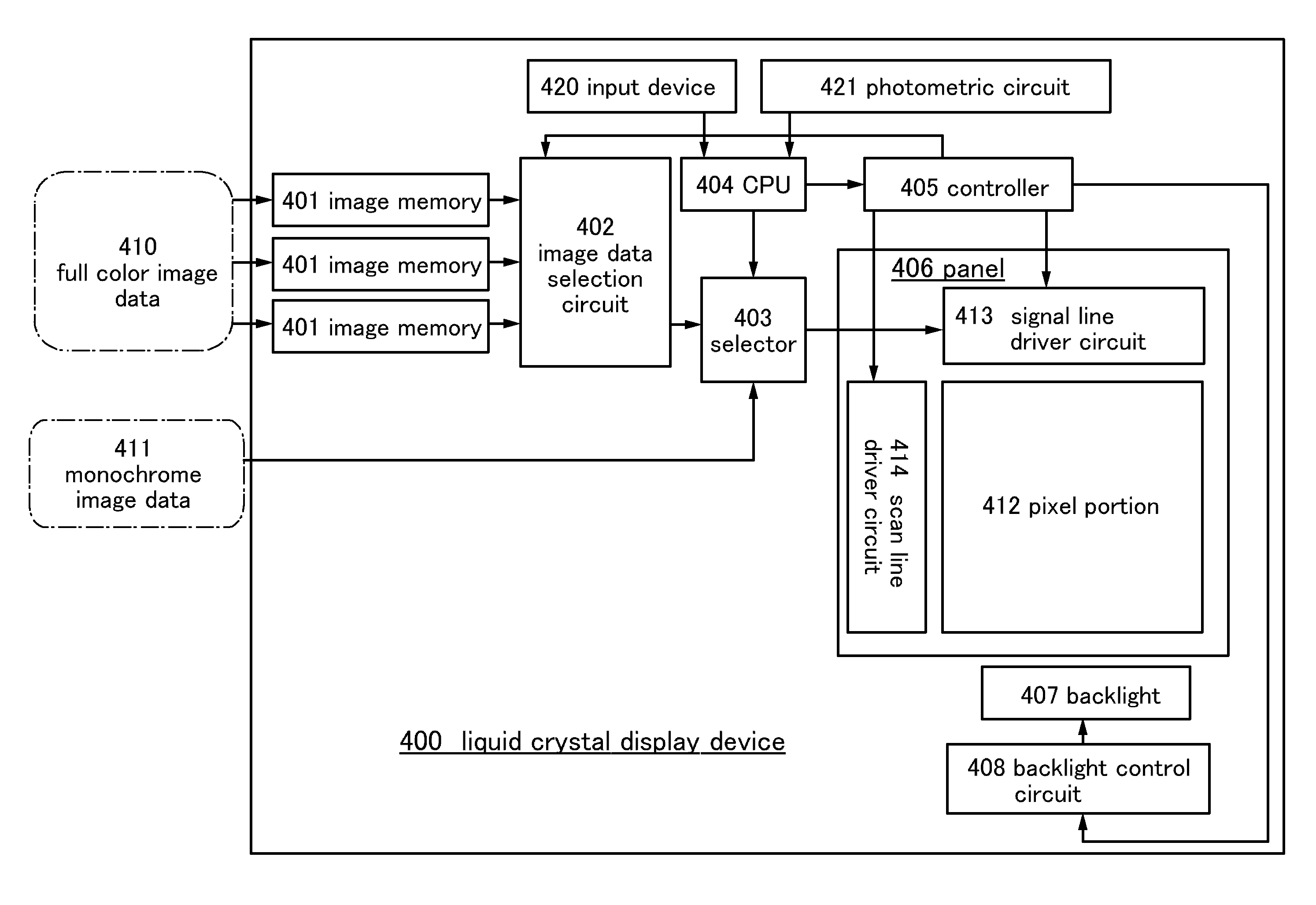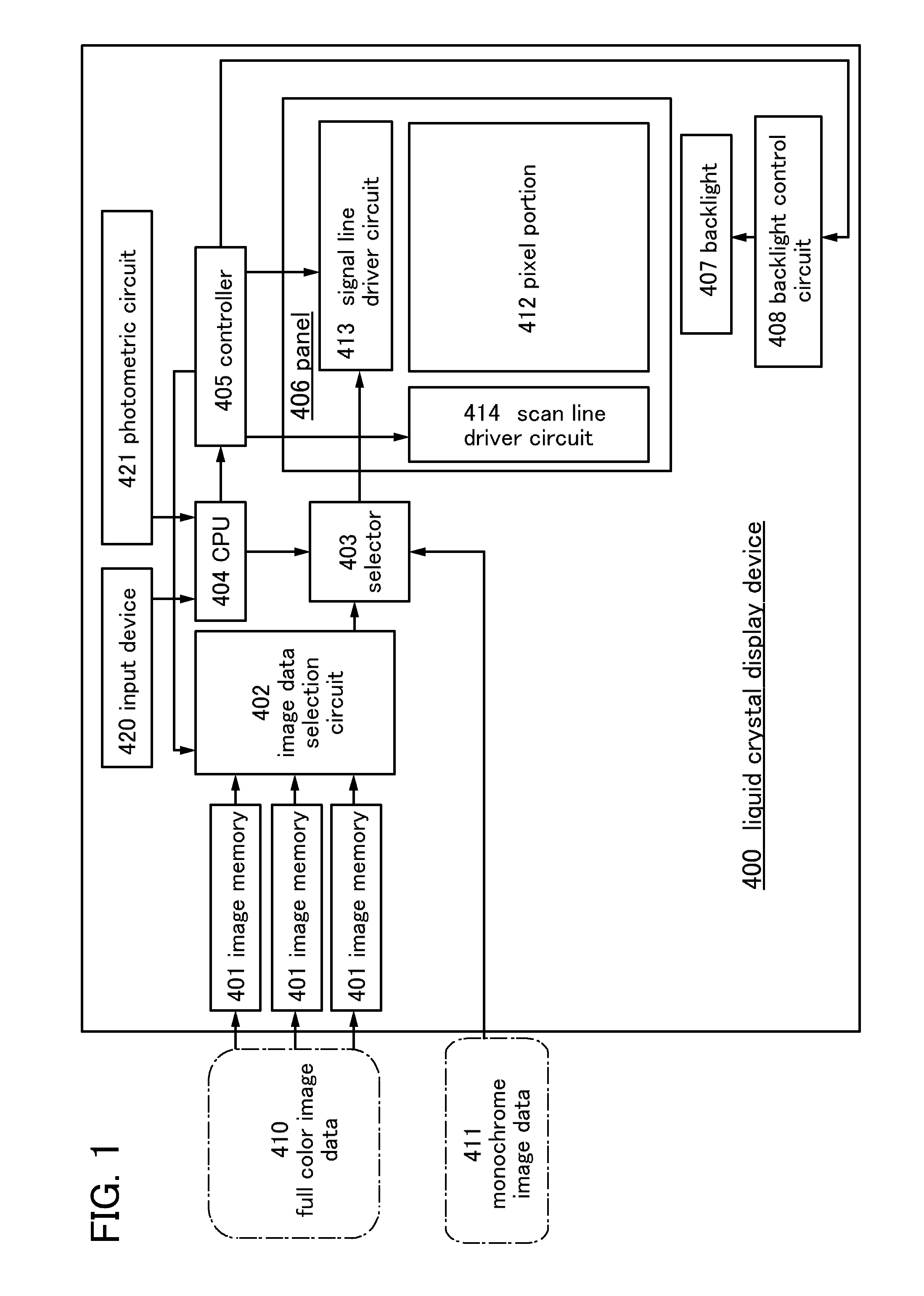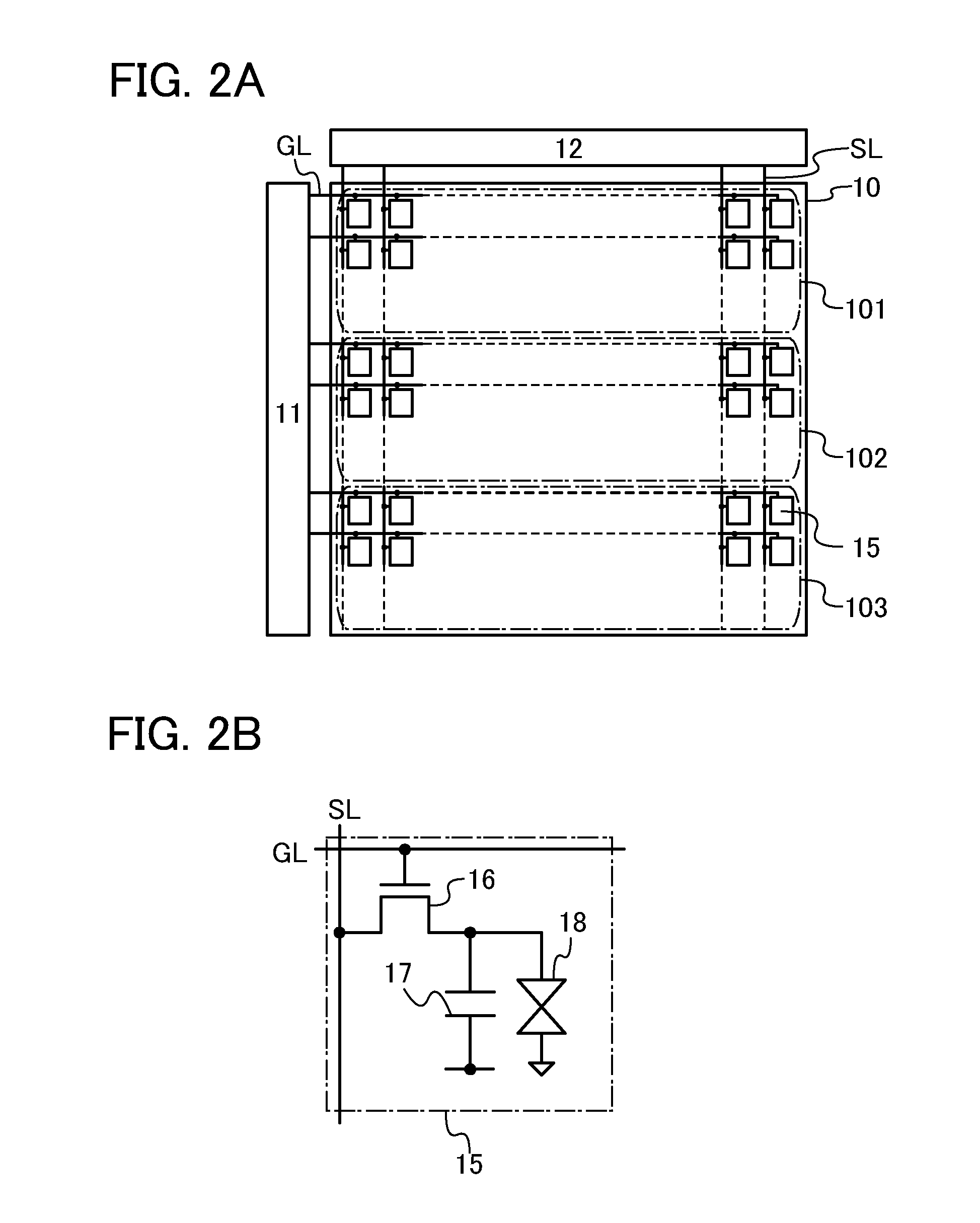Liquid crystal display device
a liquid crystal display and active matrix technology, applied in the field of active matrix liquid crystal display devices, can solve the problems of color breakage and other problems, and achieve the effect of prolonging the time for holding a voltage applied to a liquid crystal elemen
- Summary
- Abstract
- Description
- Claims
- Application Information
AI Technical Summary
Benefits of technology
Problems solved by technology
Method used
Image
Examples
embodiment 1
Structure Example of Liquid Crystal Display Device
[0067]A liquid crystal display device 400 illustrated in FIG. 1 includes a plurality of image memories 401, an image data selection circuit 402, a selector 403, a CPU 404, a controller 405, a panel 406, a backlight 407, and a backlight control circuit 408.
[0068]Image data corresponding to a full-color image (full-color image data 410), which are input to the liquid crystal display device 400, are stored in the plurality of image memories 401. The full-color image data 410 include image data for their respective hues. The image data for the respective hues are stored in the respective image memories 401.
[0069]As the image memories 401, for example, memory circuits such as dynamic random access memories (DRAMs) or static random access memories (SRAMs) can be used.
[0070]The image data selection circuit 402 reads the full-color image data for the respective hues, which are stored in the plurality of image memories 401, and sends the full...
configuration example 1
of Pulse Output Circuit
[0135]Next, FIG. 8A illustrates an example of a specific configuration of the x-th pulse output circuit 20—x illustrated in FIG. 7. The pulse output circuit illustrated in FIG. 8A includes transistors 31 to 39.
[0136]A gate electrode of the transistor 31 is connected to the terminal 21. A first terminal of the transistor 31 is connected to a node supplied with a high power supply potential (Vdd). A second terminal of the transistor 31 is connected to a gate electrode of the transistor 33 and a gate electrode of the transistor 38.
[0137]A gate electrode of the transistor 32 is connected to a gate electrode of the transistor 34 and a gate electrode of the transistor 39. A first terminal of the transistor 32 is connected to a node supplied with a low power supply potential (Vss). A second terminal of the transistor 32 is connected to the gate electrode of the transistor 33 and the gate electrode of the transistor 38.
[0138]A first terminal of the transistor 33 is co...
configuration example 2
of Pulse Output Circuit
[0208]FIG. 19A illustrates another example of the configuration of the pulse output circuit. The pulse output circuit illustrated in FIG. 19A includes a transistor 50 in addition to the configuration of the pulse output circuit illustrated in FIG. 8A. A first terminal of the transistor 50 is connected to the node supplied with the high power supply potential. A second terminal of the transistor 50 is connected to the gate electrode of the transistor 32, the gate electrode of the transistor 34, and the gate electrode of the transistor 39. A gate electrode of the transistor 50 is connected to a reset terminal (Reset).
[0209]A high-level potential is input to the reset terminal in a period which follows the round of switching of hues of the backlight in the pixel portion; a low-level potential is input in the other periods. Note that the transistor 50 is turned on by input of a high-level potential. Thus, the potential of each node can be initialized in the period...
PUM
 Login to View More
Login to View More Abstract
Description
Claims
Application Information
 Login to View More
Login to View More - R&D
- Intellectual Property
- Life Sciences
- Materials
- Tech Scout
- Unparalleled Data Quality
- Higher Quality Content
- 60% Fewer Hallucinations
Browse by: Latest US Patents, China's latest patents, Technical Efficacy Thesaurus, Application Domain, Technology Topic, Popular Technical Reports.
© 2025 PatSnap. All rights reserved.Legal|Privacy policy|Modern Slavery Act Transparency Statement|Sitemap|About US| Contact US: help@patsnap.com



